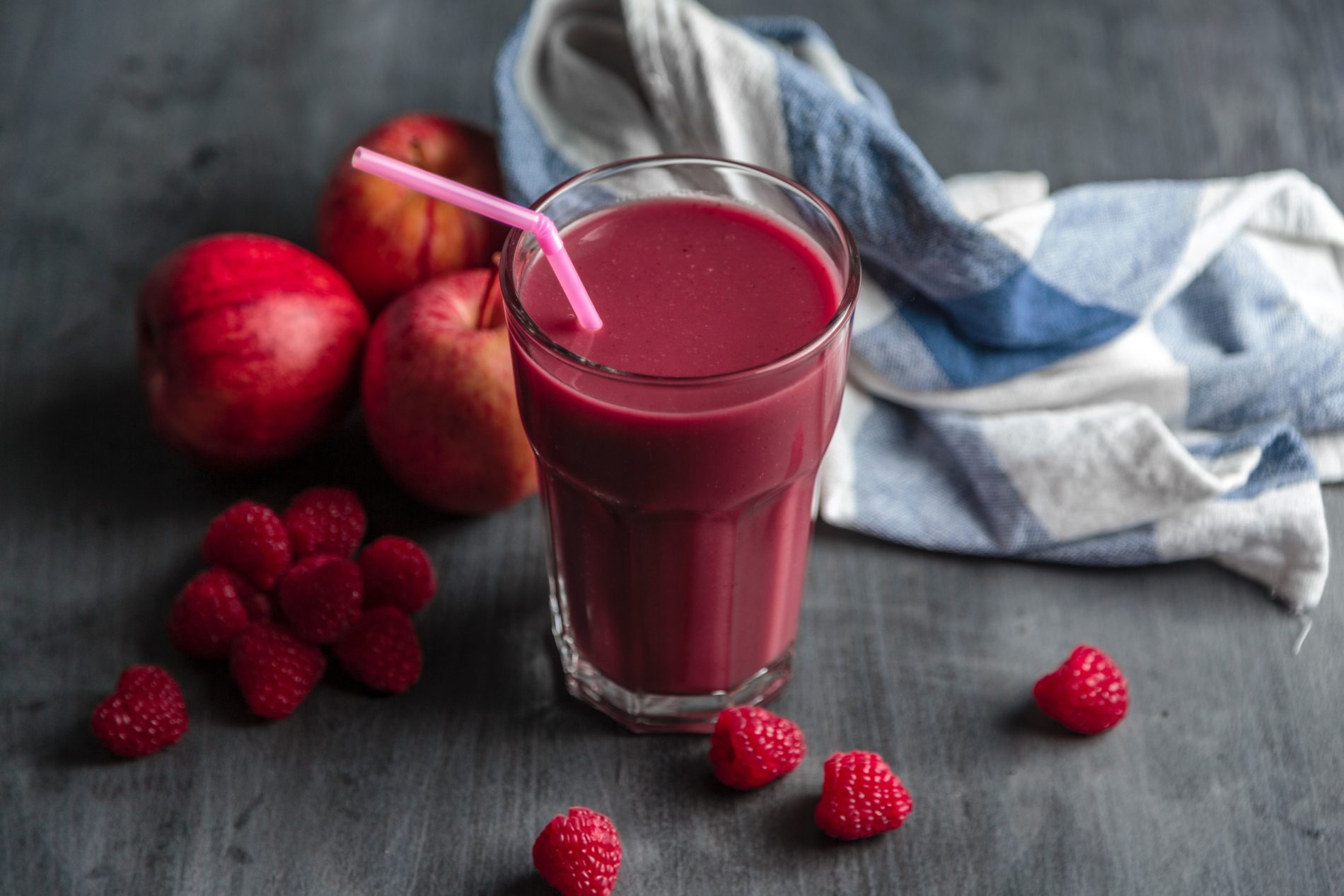Human nature always looks for a firm and definitive answer to all questions. We often look for the “yes” or “no”, the good or the bad, the “do” or the “don’t”… This is how we can face the following dilemma: juice or smoothie? Which one to choose? Which one is better for your health? As usual, there is no straightforward answer, as it depends on what you are looking for…

If you want to replace a meal: smoothie
Making a smoothie means putting the whole fruit and vegetables in a blender. As a result, the product is consumed in its entirety and with the fibre still present. This allows us to stay full for longer and can therefore replace a meal.
If you want to turn your smoothie into a full meal, I recommend adding protein and fat. This way you will get a well-balanced meal.
My advice: put this in your smoothie
- 1 fruit of your choice
- 1-2 vegetables of your choice
- source of fat (a spoonful of coconut oil, avocado, walnuts or chia seeds)
- source of protein (protein powder, walnut butter or yoghurt).
If you’re looking to fill up on vitamins: juice
When you make juice, you separate the juice from the dietary fibre. This produces a concentrated liquid of vitamins, minerals and phytonutrients.
It is important to mention that dietary fibre is not bad. However, when it comes to juice, the absence of dietary fibre facilitates the process of assimilating vitamins. Without fibre, the body can absorb essential nutrients almost instantly, with the least possible effort. The digestion process is therefore ” short-circuited “.
Since juices are more concentrated than smoothies, it takes much more fresh produce to get the same amount of liquid. This means that you can consume even more vegetables in a juice. Who could eat a cucumber, celery stalks, a lemon and three handfuls of fresh spinach for breakfast? However, in the form of a 300ml juice, it is easy to drink.

If you prefer fruits over vegetables: smoothie
Because smoothies contain dietary fibre, the body absorbs the nutrients in the drink more slowly and evenly compared to juice. This way, the nutrients pass directly into the bloodstream. This is the case for the vitamins in the juice, but also for the natural sugar in the fruit.
When you drink a fruit juice, the natural sugar from the fruit goes into the bloodstream very easily and quickly. This leads to a rapid increase in sugar levels and creates unstable blood sugar levels. This is associated with health problems such as diabetes and obesity, for example.
If you’re more of a fruit than a vegetable person, you should choose smoothies instead. The dietary fibre in the drink slows down the digestion of the natural sugars in the fruit. This will help you avoid sugar cravings.
If you often have a bloated stomach: juice
Fibre is part of a balanced and healthy diet, but too much fibre at once can cause bloating. If you often have a bloated stomach after drinking smoothies, try to opt for a juice.
If you are on a tight budget: smoothie
Since juice is more concentrated, making a glass of juice requires a lot more fruit and vegetables than a glass of smoothie. Therefore, it will cost you more.
In addition, cheap fruit and vegetable juicers crush fruit and vegetables at high speed – and the heat kills the vitamins. To extract the juice from fruits and vegetables while preserving the vitamins, you would therefore need a juice extractor that runs gently without heat. Often these machines are much more expensive than a blender used in making a smoothie.












What do you think?